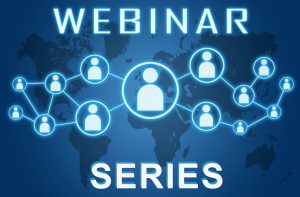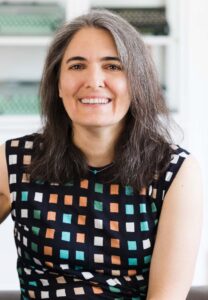
Korean Hand Therapy Essentials: A Three-Part Introduction for Patient Care and Practitioner Wellness
Part 1 – Wednesday, October 15, 2025
Part 2 – Wednesday, January 21, 2026
Part 3 – Wednesday, February 25, 2026
Series Overview
Korean Hand Therapy Essentials introduces medical acupuncturists to a complete microsystem that enhances clinical practice and supports practitioner wellness. Over three progressive webinars, participants will journey from basic correspondence therapy, through diagnostic techniques, to advanced 5-element applications. KHT techniques can be performed without needles, using pressure and other non-invasive methods, making it ideal for needle-sensitive patients, pediatric populations, and clinical settings where needling may be challenging. This series provides immediately usable skills while revealing the depth available through comprehensive KHT training.
Presented by Barbara de la Torre, MD, FAAMA

Dr. Barbara de la Torre is a Fellow of the American Academy of Medical Acupuncture and board-certified in Family Medicine, with over 30 years of experience integrating Eastern and Western medicine across diverse clinical settings. She serves on AAMA’s Board of Directors and CME Committee and is faculty at the Helms Medical Institute. She also holds a seven-year Master’s certification in Medical Qigong from the Ling Gui lineage.
Dr. de la Torre is North America’s leading Korean Hand Therapy educator, continuing the mission of her late mentor, Dr. Dan Lobash, PhD, LAc. Her KHT journey began unconventionally when her mother sent her press pellets and hand maps during college. Her mother, along with her mentors Dr. Lobash and medical acupuncturist Dr. Lowell Kobrin, all studied directly with KHT creator Dr. Tae Woo Yoo, giving Dr. de la Torre a unique connection to the source of this microsystem.
In 2022, Dr. de la Torre founded Third Opinion MD to bridge medical paradigms and empower practitioners with integrative tools for clinical practice. She maintains a private practice in Portland, Oregon, consults on health systems strategies, and teaches KHT and East Asian self-care modalities. Her work focuses on advancing KHT education and exploring its evidence-based applications in modern medical practice.
To Register
The fee to participate in these LIVE activities is $40/members and $70/non-members per webcast.
Part 1 – Introduction to Korean Hand Therapy (KHT) – A Correspondence Microsystem for Patients and Practitioners
Korean Hand Therapy represents one of the most clinically practical microsystems available to medical acupuncturists, offering immediate applications for both clinical practice and self-care. This foundational webinar introduces core KHT principles and provides an overview of correspondence therapy. Participants will explore the historical development of KHT by Dr. Tae Woo Yoo, and experience firsthand how correspondence therapy can enhance their current practice.
A portion of this session focuses on self-care applications, with live demonstrations of techniques that practitioners can use for their own health maintenance. Select clinical cases will illustrate KHT’s potential, while discussion of current research highlights opportunities for evidence-based integration. This session provides a taste of what comprehensive KHT training offers, focusing on immediately applicable techniques for both patient care and practitioner wellness.
Objectives:
1. Identify the fundamental principles of KHT correspondence therapy and their clinical applications
2. Demonstrate basic KHT self-care techniques for practitioner health maintenance
3. Analyze available research on KHT and recognize opportunities for further
investigation
4. Apply basic KHT techniques to enhance current medical acupuncture practice
Part 2 – KHT Meridian Therapy, Diagnostic Techniques, and Clinical Integration
This session introduces KHT’s unique diagnostic framework and meridian system, demonstrating how these methods can enhance clinical assessment and treatment planning. Participants will gain exposure to 3-constitution diagnosis and yin/yang pulse diagnosis, understanding their role in KHT practice. The webinar will explore how these diagnostic techniques can be applied for patient assessment and practitioner self-care. While full diagnostic mastery requires dedicated study, this webinar provides essential context and preliminary skills. Clinical examples will showcase the power of KHT diagnosis, which provides immediate feedback. The key similarities and differences between KHT micromeridians and body meridians will be explored, with emphasis on meridian nomenclature, trajectories, and clinical applications.
Objectives:
1. Recognize KHT diagnostic methods and their clinical significance
2. Describe the micromeridian naming system and pathways
3. Identify the therapeutic value from using KHT diagnostics
4. Appreciate the application of KHT to clinical and self-care settings
Part 3 – Advanced KHT – Returning to the 5-Element Roots of Korean Medicine
This advanced session introduces a groundbreaking approach to KHT 5-element
treatment that bridges two pillars of Korean medicine. While traditional KHT 5-element methods have proven challenging for Western practitioners, this webinar reveals how principles from Sa’am acupuncture—another renowned Korean medical tradition—can revolutionize 5-element application in KHT. Participants will receive a brief introduction to Sa’am’s elegant approach to diagnosis and treatment, followed by an exploration of how these principles can replace complex traditional KHT 5-element protocols. Both KHT and Sa’am share deep roots in Korean medicine, making their integration natural yet innovative. While 5-element self-care is possible for practitioners, it requires extensive training to apply safely and effectively. Selected case studies demonstrate the clinical advantages of this simplified approach. Discussion includes current research opportunities and why this innovation makes advanced KHT accessible to more practitioners.
Objectives:
1. Discuss the basic principles of Sa’am acupuncture and how both Sa’am and KHT share Korean medicine roots
2. Compare traditional KHT 5-element methods with this innovative Sa’am-based approach
3. Recognize that advanced self-care applications require comprehensive training
4. Identify opportunities for advancing KHT practice through this integration
